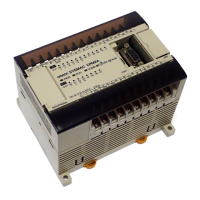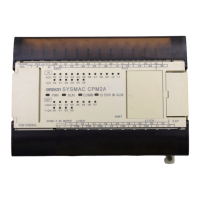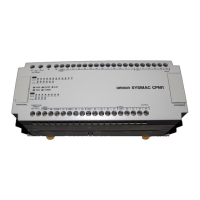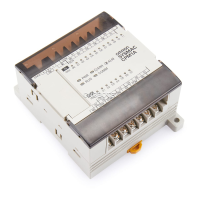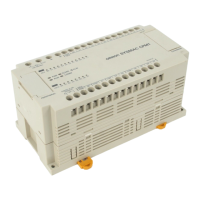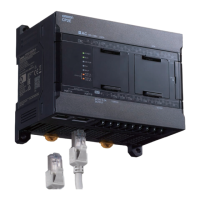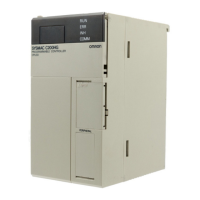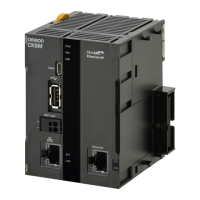2
CPM2C Features and Functions Section 1-1
1-1 CPM2C Features and Functions
1-1-1 CPM2C Features
The CPM2C PCs incorporate a variety of features in a compact Unit, including
synchronized pulse control, interrupt inputs, pulse outputs, and a clock func-
tion. The CPM2C CPU Unit is a stand-alone Unit that can handle a broad
range of machine control applications and it is small enough to be incorpo-
rated as the control unit in almost any free-standing machine.
The full complement of communications functions provide communications
with personal computers, other OMRON PCs, and OMRON Programmable
Terminals. These communications capabilities allow the user to design a low-
cost distributed production system.
Basic Functions
CPU Unit Variations The CPM2C PCs are one-piece PCs with 10, 20, or 32 I/O points in I/O termi-
nals or a built-in connector. There are 3 types of outputs available (relay out-
puts, sinking transistor outputs, and sourcing transistor outputs). All CPM2C
PCs require a 24-VDC power supply.
Expansion I/O Units Up to 5 Expansion I/O Units can be connected to the CPU Unit to increase the
PC’s I/O capacity to a maximum of 192 I/O points. There are 23 different
Expansion I/O Units available, including Units with 10 I/O points, 24 I/O points,
32 I/O points, 8 input points, 8 output points, 16 inputs points, and 16 output
points. The maximum I/O capacity of 192 I/O points is achieved by connecting
five 32-point Expansion I/O Units to a CPU Unit with 32 built-in I/O points.
Share Programming
Devices
Programming and monitoring for the CPM2C can be performed with CX-Pro-
grammer version 2.1 or higher or with a Programming Console. Programming
is also possible with the SYSMAC-CPT or SYSMAC Support Software.
The communications port can be used simulta-
neously as two ports: Peripheral and RS-232C.
The peripheral port supports Programming Devices,
Host Link, and no-protocol communications.
The RS-232C port supports Host Link, no-protocol
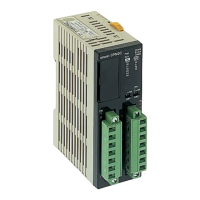
